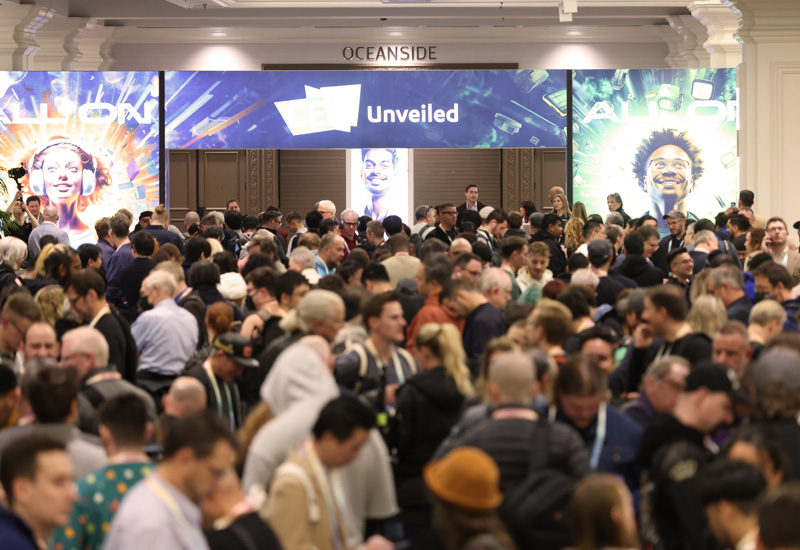As we reflect on the recently concluded Consumer Electronics Show (CES) 2024, an intriguing pattern emerged from our in-depth media analysis. By analysing 386 English-language articles focused on the event, we’ve identified a pivotal trend poised to reshape the consumer electronics landscape: the burgeoning era of consumer-on-device AI, or edge AI, marking its transition to mass adoption.
In a market traditionally dominated by tech behemoths like Apple, Samsung, LG, and Sony, alongside a surge of dynamic new entrants, CES 2024 has illuminated an interesting finding. The sheer ubiquity of AI has diluted its novelty, making it increasingly challenging for companies to leverage it as a unique selling proposition. In this saturated space, the role of public relations (PR) and communications becomes ever more critical, overshadowing even the most groundbreaking innovations.
Our analysis of CES 2024 reveals a concerning trend: an overabundance of AI. The term has become so commonplace that it’s losing its distinctiveness and appeal as a selling point. This was especially evident in the Smart Homes category, which dominated the event’s discourse, featuring a myriad of AI-integrated household items.
However, our stakeholder mapping revealed that one company did manage to stand out in the AI cacophony with its distinctive PR and comms approach – Samsung, which emerged as the most influential company in the CES media debate:
How Samsung managed to tap into AI better than others
While almost every other company at CES talked about how it used AI, Samsung‘s messaging went beyond product-specific applications to encompass a broader perspective.
The company’s “AI for all” vision focused on a broad ecosystem view driving mass adoption by embedding AI across devices and services to improve experiences. It also highlighted open collaboration with partners as key to bringing AI advancements to consumers.
This resonated with more media outlets than the narrower approaches of other tech players.
For example, LG’s “Zero Labour Home” vision centred mainly around eliminating household chores and around its own proprietary products and platforms.
In the meantime, companies such as Intel, Nvidia, Microsoft, Asus, Dell, and Google predominantly emphasised how AI enhances the technical capabilities of their products, showcasing its role in making devices better and faster.
A strategic shift
Commetric’s analysis found Samsung executed a strategic shift in its PR and communications strategy at CES 2024.
The company previously emphasised diverse product lines and innovative approaches across multiple avenues – take a look at our analysis of last year’s CES for reference.
However, it marked a significant shift by consolidating these efforts into a unified message for the first time.
Our reputation pillar analysis provides a strategic lens to evaluate the media penetration of Samsung’s strategic messages during CES 2024. By assessing the media coverage across different reputation pillars, we can gauge the effectiveness of Samsung’s communication efforts and how they align with the company’s overarching brand values:
Within Innovation, Samsung managed to show that its products, like its AI robot Ballie or its AI washing machines, are not merely an innovation but a testament to its belief in AI as personalised companions that enhance lives. Their narrative went beyond product specifications to depict a vision of AI as a life-enhancing tool.
Within the context of Enable Access, Samsung emphasised inclusivity, safety, and energy efficiency in AI-enabled devices through its partnerships – for instance with Hyundai, facilitating Home-to-Car and Car-to-Home services.
Meanwhile, the Citizenship driver focused on how the company demonstrated its commitment to sustainability by outlining its efforts to create a more circular economy for its AI devices and to work with EV makes like Tesla.
The bottom line: AI is no longer a differentiating factor
CES 2024 showed us that AI is becoming something like the new electricity: it will be embedded in most products, becoming expected and non-differentiating.
In this crowded tech ecosystem, where innovation can often be quickly matched or surpassed, PR and communications take centre stage as the linchpin for shaping perceptions, differentiating brands, and ultimately, ensuring a lasting impact.
For companies navigating the evolving tech landscape, this paradigm shift towards AI as the new standard necessitates a reevaluation of their reputation pillars.
Traditionally, tech giants have built their reputations on a foundation of product excellence, innovation, and market leadership. However, in an era where AI is pervasive, these pillars must evolve to incorporate AI not as an isolated technology but as an integral part of their brand identity.
